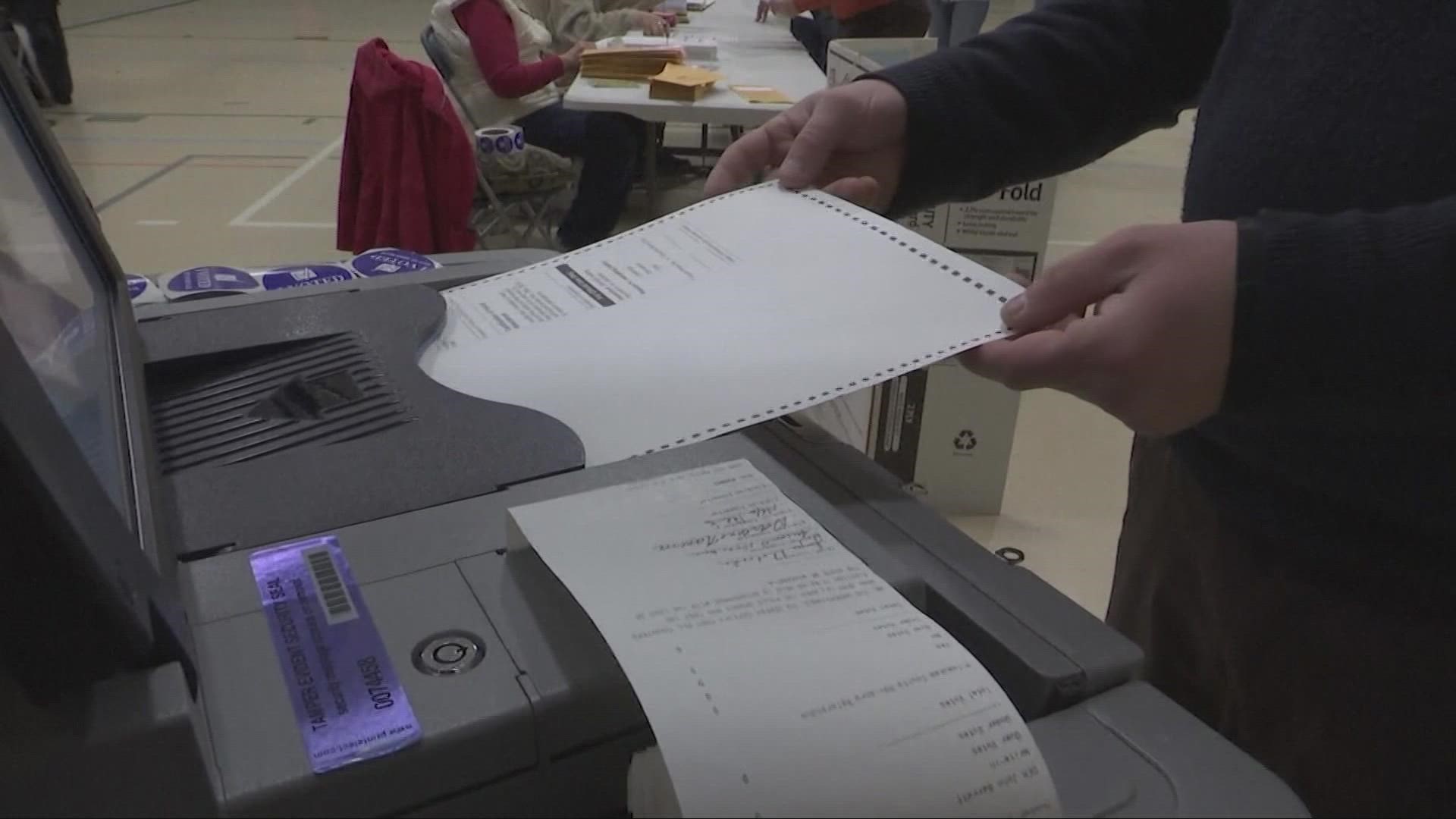BEREA, Ohio — With less than two weeks to go before the midterm elections, could Ohio's open U.S. Senate seat be on the verge of flipping?
In the race to replace the retiring Republican Rob Portman, a new poll released Wednesday by Baldwin Wallace University shows Democratic nominee and current U.S. Rep. Tim Ryan with a narrow lead over venture capitalist and author JD Vance. 50.2% of respondents favored Ryan compared to 46% for the GOP's Vance, with a +/-3.5% margin of error.
Once considered a reliable swing territory, Ohio has grown increasingly red in recent years, with former President Donald Trump winning the state by roughly eight points in each of the last two presidential elections. 2020 marked the first time since 1960 that the candidate who won Ohio did not win the race for the White House, as Democrat Joe Biden wound up taking both the national popular and electoral tallies.
VOTER GUIDE: Nov. 8 general election in Ohio: See what's on the ballot and how to find your polling place
Yet despite the favorable landscape for Republicans, Ryan has managed to make the Senate battle a virtual toss-up, running a campaign that portrays himself as a moderate seeking to find an "exhausted majority." He has also expressed agreement with Trump on issues involving international trade while at the same time distancing himself from current President Biden, whom 54% of Ohioans currently view in an unfavorable light, according to the BW survey.
Vance at one time considered himself a "Never Trump" Republican but has since fully accepted the former president's endorsement, which likely helped him win the GOP Senate primary in May. He has also embraced Trump's lies that the 2020 presidential election was "stolen" from him, while at the same time noting how Ryan has voted with Biden's positions 100% of the time while in Congress.
Ryan has countered by calling Vance an "a— kisser" to Trump, whom while more popular than Biden in the Buckeye State is still viewed unfavorably by just over half of its residents. Ryan also may have an advantage with his own likeability: According to the Baldwin Wallace poll, 40% of Ohioans have a favorable opinion of Ryan compared to 38% unfavorable. By contrast, only 33% of respondents have a positive opinion of Vance while 46% have a negative one.
The poll also looked at the race for governor, which pits incumbent Republican Mike DeWine against Democrat and former Dayton Mayor Nan Whaley. However, that election does not appear to be nearly as close at the moment, with roughly 56% saying they will vote for DeWine and just 38% backing Whaley.
Whaley has attempted to tie the anti-abortion DeWine to the Supreme Court's recent decision to overturn Roe v. Wade, as well as controversies surrounding redistricting and the ongoing FirstEnergy bribery scandal. Despite this, 50% of voters still view DeWine favorably against only 31% unfavorably, making him one of the most popular politicians in Ohio.


Among those surveyed, the issue most topping their minds when they go to the polls seems to be inflation, which currently sits near a 40-year high. When given a list of potential concerns that will influence their vote, a plurality of 38% said inflation was No. 1, followed by abortion (17%), "preserving democracy" (16%) and fears of a possible recession (10%).
Here are some other notes from the BW poll:
- Republicans are currently favored to maintain control of the Supreme Court of Ohio, with Sharon Kennedy in particular leading Jennifer Brunner by seven points in the race for Chief Justice.
- DeWine holds a whopping 33-point lead over Whaley among independents as well as an eight-point lead among female voters. Whaley is attempting to become the first woman in Ohio history to win a gubernatorial election.
- Ryan currently bests Vance by six points among independent voters as well as by 23 points among those who consider themselves "moderate." Vance holds a decisive edge among rural residents, while the two candidates are virtually tied in the suburbs.
- Statewide Issues 1 and 2 are both favored to pass by wide margins. Issue 1 would require judges to consider "public safety" when setting bail for criminal defendants, while Issue 2 would formally make it illegal for non-U.S. citizens to vote in any election in Ohio.

